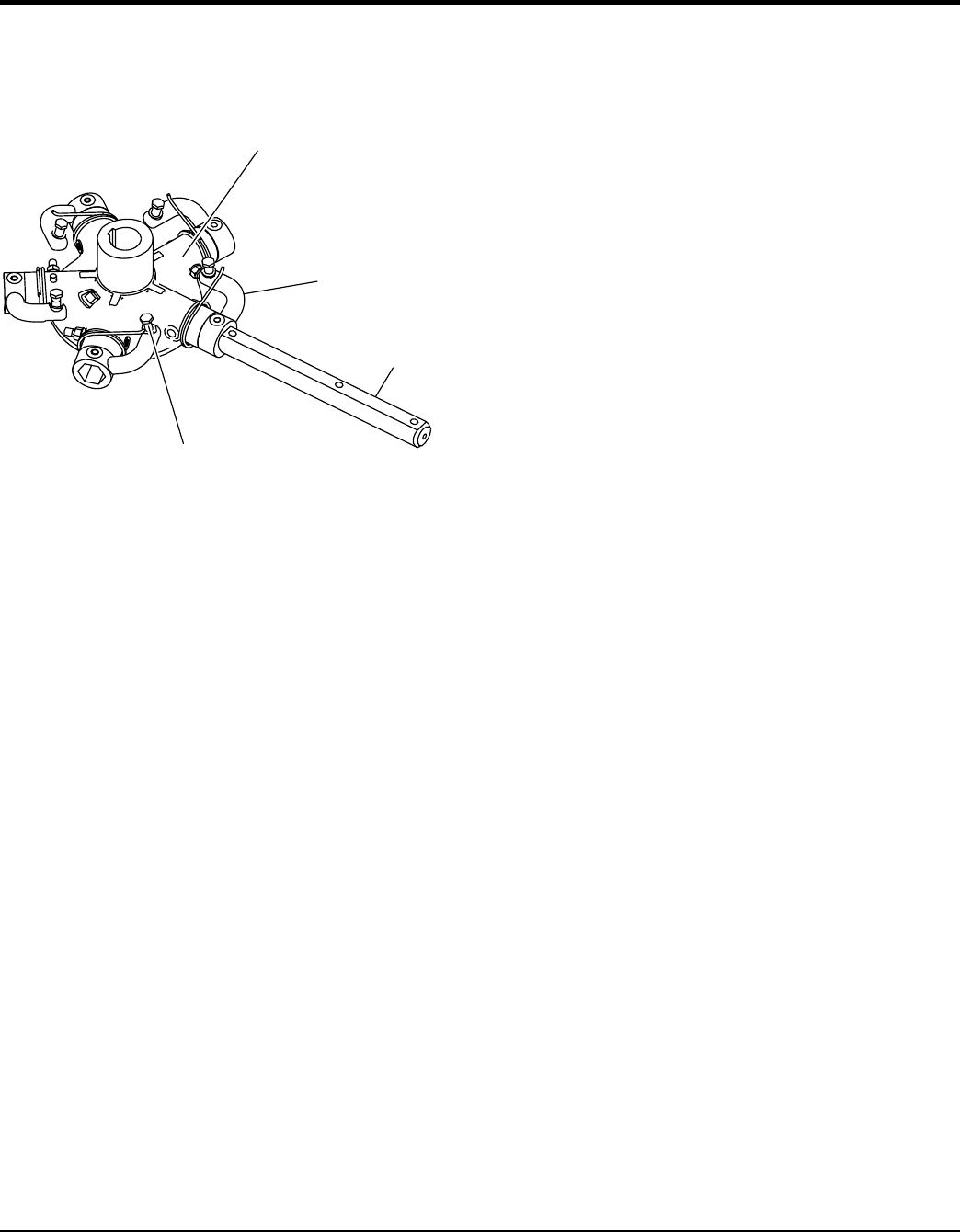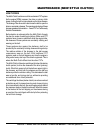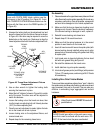
PAGE 38 — HHXD5 RIDE-ON TROWEL • OPERATION MANUAL — REV. #2 (05/04/12)
MAINTENANCE
Look at the machine while it is running, do the guard
rings “rock up and down” relative to the ground?
Do the pitch control towers rock back and forth?
Figure 34. Blade Pitch Adjustment Bolt
The easiest and most consistent way to make adjustments
on the trowel arm fingers is to use the Trowel Arm Adjustment
Fixture (P/N 9177). It comes with all the hardware necessary
to properly accomplish this maintenance and instructions
on how to utilize this tool.
If a trowel arm adjustment fixture is not available and
immediate adjustment is necessary, temporary field
adjustment can be made if you can see or feel which blade
is pulling harder by adjusting the bolt that corresponds to
that blade.
A better way to determine which blades need adjustment
is to place the machine on a known FLAT surface (steel
metal plate) and pitch the blades as flat as possible. Look
at the adjustment bolts. They should all barely make contact
with the lower wear plate on the spider. If you can see that
one of them is not making contact, some adjustment will
be necessary.
Adjust the “high” bolts down to the level of the one that is not
touching, or adjust the “low” bolt up to the level of the higher
ones. If possible, adjust the low bolt up to the level of the
rest of the bolts. This is the fastest way, but may not always
work. Verify after adjustment the blades pitch correctly.
Blades that are incorrectly adjusted often will not be able to
pitch flat. This can occur if the adjusting bolts are raised too
Trowel
Arm
Trowel Lever
(Finger)
Spider Plate
Blade Pitch
Adjustment Bolt
high. Conversely, adjusting bolts that are too low will not allow
the blades to be pitched high enough for finishing operations.
If, after making Blade Pitch adjustments the machine is
still finishing poorly, blades, trowel arms, and trowel arm
bushings may be suspect and should be looked at for
adjustment, wear, or damage. See the following sections.
Changing Blades
It is recommended that ALL the blades on the entire
machine are changed at the same time. If only one or
some of the blades are changed, the machine will not
finish concrete consistently and the machine may wobble
or bounce.
1. Place the machine on a flat, level surface. Adjust
the blade pitch control to make the blades as flat as
possible. Note the blade orientation on the trowel arm.
This is important for ride-on trowels as the two sets
of blades counter-rotate. Lift the machine up, placing
blocks under the main guard ring to support it.
2. Remove the bolts and lock washers on the trowel arm,
and then remove the blade.
3. Scrape all concrete and debris from the trowel arm. This
is important to properly seat the new blade.
4. Install the new blade, maintaining the proper orientation
for direction of rotation.
5. Reinstall the bolts and lock washers.
6. Repeat steps 2-5 for all remaining blades.
Steering Adjustment
The steering assist adjustment should be performed only
by qualified service technicians. For HHXD5 steering
adjustment instructions, reference MQ Whiteman service
bulletin 200925.
Clean-Up
Never allow concrete to harden on the power trowel.
Immediately after use wash any concrete off the trowel
with water, be careful not to spray a hot engine or muffler.
An old paint brush or broom may help loosen any concrete
that has started to harden.


















